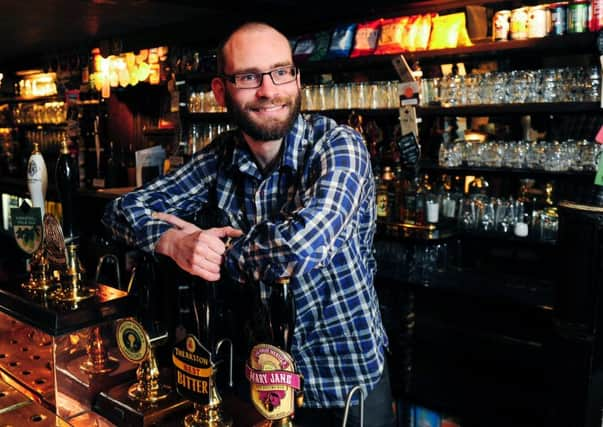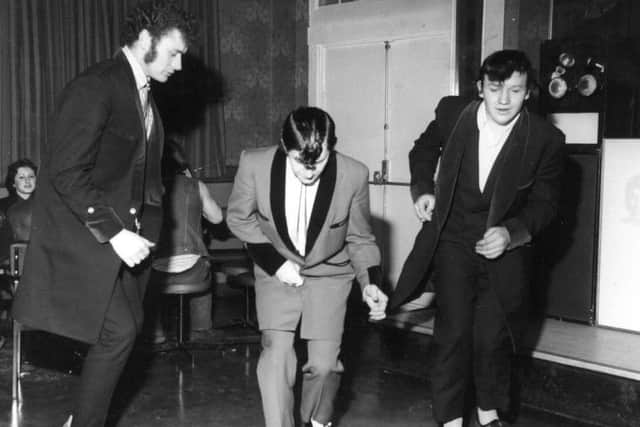What does the future hold for our historic pubs?


LANDLADY Angela Spencer admits her pub has seen better days. As an 18-year-old in the area where she grew up, she remembers it being “absolutely packed solid” but now it is struggling to pull in customers.
A refurbishment is planned and, after taking over at the pub in the summer, she believes it has the potential to be successful once again.
Advertisement
Hide AdAdvertisement
Hide AdOther big pubs she remembers from her youth have not been so lucky and now the Wykebeck Arms on Selby Road in east Leeds is among the last of its kind in a community where life once revolved around nights out at the pub.


It is a familiar story not just in Leeds but across the country. Pub closures have eased from the record 50 or so a week which shut in England in 2009 but many still face the threat of calling last orders for the final time.
Better home entertainment, cheap supermarket alcohol, drink-drive laws, soaring land values and the smoking ban have been blamed for the decline of the local pub in the last 50 years as buildings are converted into restaurants or convenience stores, which requires no planning permission, while others are demolished to make way for houses and nursing homes.
Those pubs most at risk are often those originally built to serve the suburbs as vast council and private housing estates were developed after the First World War.
Advertisement
Hide AdAdvertisement
Hide AdExperts say the buildings are often overlooked but claim they are an essential part of our common identity as local 20th century landmarks, triggering new interest in their preservation.


Following a study by Historic England to identify the best of their kind, Ministers announced in the summer the listing of 30 inter-war pubs. As part of the work, a team of experts from Leicester University was commissioned to look at the range and origins of pubs in Leeds in an effort to raise awareness of their history and the threats they face.
In the report, it notes the Wykebeck Arms was designed for the Kirkstall Brewery in 1938 to serve the new council estate nearby. Built in the Arts and Crafts Movement motif style with steeply pitched roofs and timber fittings, it originally had a number of separate rooms aimed at different clientele ranging from the public bar to the ladies room.
Like many others of its type, these divisions were later ended as a more open plan was adopted which gave staff a better view from the bar, while the rear lounge was extended in the 1950s to accommodate a dance floor and stage.
Advertisement
Hide AdAdvertisement
Hide AdA revealing flavour of sentiment at the time is contained in a promotional brochure from 1953 entitled Yorkshire Magnet: The Story of John Smith’s Tadcaster. It says: “(John Smith’s) can rightly claim to be pioneers in providing what is now known as the modern public house, replacing the sawdust floor with fitted carpets or rubber covering and providing comfortable settees and chairs in place of primitive benches of the old taverns.
“The whitewashed cottage-type inn with its poky windows and primitive sanitary arrangements may have its attractions but something more is demanded by the public nowadays and few could afford the cost of bringing such buildings up to date and, at the same time, retaining the traditional atmosphere of friendliness, good cheer and hospitality.”
Modern pubs were built in their thousands in the wake of the First World War as it became clear to breweries which by then owned the vast majority that they had to be spruced up to tempt new customers and overcome their reputation for drunkenness dating from the Victorian and Edwardian era.
In some parts of the country, vast sums were spent on ornately designed and decorated buildings although the report notes relatively few examples of the kind were built in Yorkshire where tight-fisted breweries preferred to employ tenants rather than managers, saving on costs. “As a consequence, the highly decorated and architecturally ambitious pubs seen in Birmingham and Liverpool are relatively rare in Leeds,” the report says.
Advertisement
Hide AdAdvertisement
Hide AdModern pubs were bigger with dining rooms which could double as function rooms or dance halls with the potential to appeal to families and a mix of incomes and classes. Tearooms meant they could be used in the afternoons outside licensing hours. Comfortable seating, carpeting, and inside toilets added to the appeal, while some even had gardens. Car parks for the new breed of motorists were essential, with many built on busy roadsides.
The brewer Tetley became increasingly aware of the commercial value of its historic pubs. Its Heritage Inns scheme singled out those with historic or architectural merit or other outstanding features as early as 1978 and within eight years 30 were included.
Some pubs in the city are formally protected from development. Whitelocks, founded in 1715 off Briggate in the city centre although its buildings are late 18th century, was grade II listed in 1963. The Garden Gate, a remarkable Edwardian survivor in inner-city Hunslet in an area which has been almost completely redeveloped, was grade II* listed in 1996.
But dozens of other pubs have fared worse over the decades leading to calls for more radical action. The Campaign for Real Ale (Camra) is encouraging the nomination of favourite pubs as “assets of community value” which can give local people extra time to explore options before a building is sold or demolished.
Advertisement
Hide AdAdvertisement
Hide AdWarren Yabsley, membership secretary for the Leeds branch of Camra, accepts it is not possible to save every pub. “Drinking habits have changed, demographics have changed and quite often big pubs don’t suit the modern style of drinking, built as they were before drink-drive laws and with a very different focus,” he says.
“I think the key to some of these problems is for the pubs to reassess what they are currently doing for the people around them and come up with new ideas. Every pub is valuable to customers who go there.
“Architecturally, there some fantastic pubs in Leeds especially in the city centre but that doesn’t mean it’s a good pub. It could be plain and simple and still be a fantastic pub. A lot of it is down to the landlord and the pub company as much as the building itself.”
Angela Spencer believes there remains big potential in the Wykebeck Arms. “It’s been neglected and I want to make it more welcoming for people to come in. I want it to go back to darts and dominoes and music that you can sing along to. It needs to be that kind of pub.
Advertisement
Hide AdAdvertisement
Hide Ad“It’s the only big pub that is still standing round here and it’s been here a long time – it’s a focal point in this area. It really would be a shame if it was turned into flats or a supermarket.”
Our historic pubs legacy
About 1,000 new pubs were built in the 1920s in England and almost 2,000 from 1935-9 often in styles described as Neo-Tudor and Neo-Georgian.
In Leeds, big council estates were developed after the Great War at Crossgates, Middleton and Meanwood but private housing for the middle classes grew four or five times as fast and breweries raced to transfer licences out of the city centre to win new business.
There has been growing awareness of the value of our historic pubs and over the years more have been formally protected from development. Whitelocks was founded in 1715 off Briggate in Leeds city centre and although its buildings are late 18th century it wasn’t grade II listed until 1963.